Lunar Images with the
Orion 10" f/3.9 Newtonian Astrograph
February 20, 2016
Uploaded 2/24/16
 South is up in this image, more info below.
South is up in this image, more info below.
| Perhaps
the best way to test out the resolution of a new scope is during
the full moon period, when you can try your hand at high magnification
lunar close ups. While the 10 inch was purchased specifically
for imaging faint comets and deep space nebula with its fast
optics, it performed very well on the moon and jupiter, and despite
the very unstable seeing which produced high frequency jiggling
across the entire image, the stacking software Autostakkert was
able to extract the few good moments as seen here. Resolution
is near half an arcsecond for this set. (The same night I was
able to image surface details on Ganymede with the same setup!) |
Click on the small images on the left for a full size 1290 x 960 image!
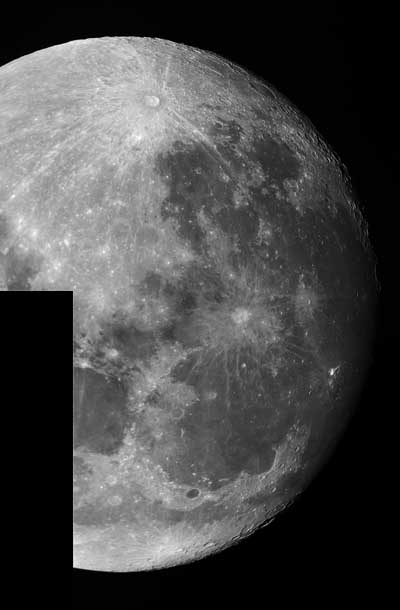
|
Left: Three
part composite of the limb of the moon which I was imaging. The
right side here is right on the verge of shadow and offered excellent
contrasts and shadow details in what for me is normally a seldom
photogrphed region. |
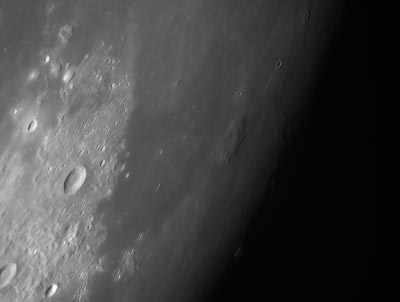
|
Left: The
unusual elevated formation just right of center is "Rumker".
Such a low profile is best seen like this right near the terminator
with low lighting.
The diameter
of this formation is 70km.
|
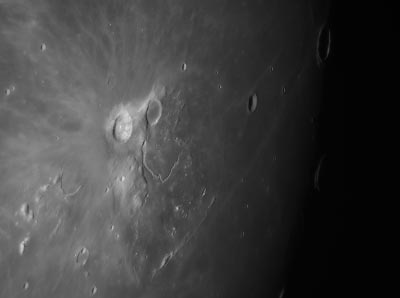
|
Left: The
brilliant big detailed crater in the middle is "Aristarchus"
with the huge Schroters valley just under it. |
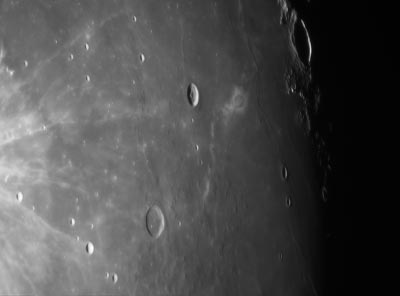
|
Left: Just
to the right of the crater Reiner above center is the very strange
white area called "Reiner Gamma". It is a mystery as
to how it formed, I have heard two dominant theories - one is
that it is a comet impact site. Second, it was a site of elevated
dust from static electricity. We must go there to be certain. |
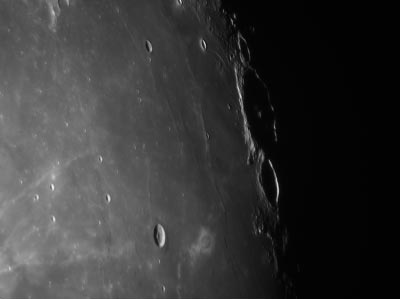
|
Left: With
Reiner Gamma near the bottom. We have on the limb the two large
craters in the rising sun Cavalerius and Hevelius |

|
Left: Wargentin
- between the two huge flat bottomed basin - Schickard and Phocylides
we find a crater filled to the brim with lava. That is Wargentin! |
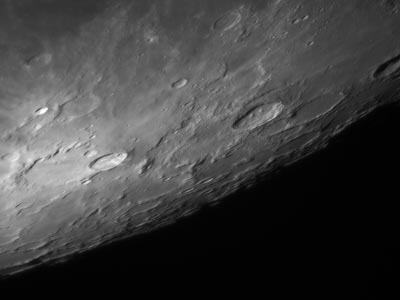
|
Left: Panning
to the north limb, a region of burried craters with a plaster
of paris look |
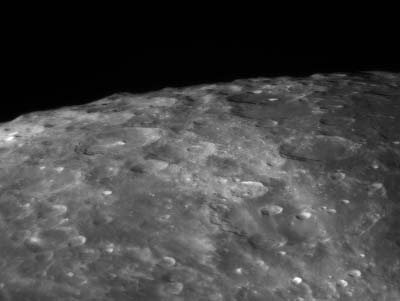
|
Left: I
shot this south polar region on the moon because of the hug mountain
I saw on the limb on the left side here. Look how Malapert Mountain
stick above the limb and shows superb detail on its flanks. The
huge crater on the lower right is Clavius. |
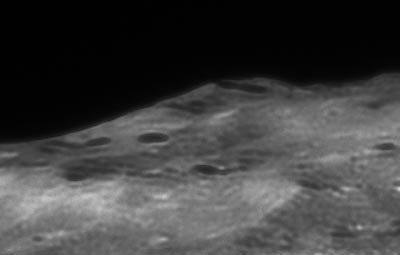
|
Left: Highly
cropped close up of Malapert Mountain. The patterning here is
processing artifacts. |
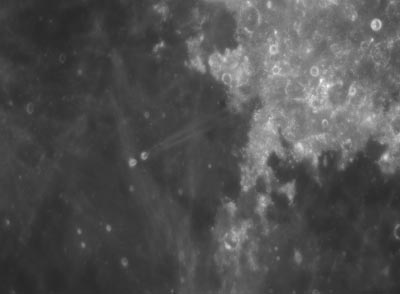
|
Left: Messier
A and B - two rayed craters from a double impact at a grazing
angle. While not on the limb, I normally cant see the moon from
the observatory when they are - when the thin crescent moon is
hanging low in the western sky. |
| Processing:
50/1200 best frames, alignment in Autostakkert, RL Deconvolution
in Pix Insight, Levels and Contrast Masking In Photoshop CS2, |
Instrument: Orion (GSO) 10" f/3.9 with 5x Barlow
Platform: Astrophysics AP1200
CCD Camera: Image Source DMK 51AU03.AS
Filter: Orion IR Pass
Exposure: 1/30 sec 12fps
Location: Payson, Arizona
Elevation: 5150 ft.
Sky: Seeing 3/5, Transparency 7/10
Outside Temperature: 35F
|